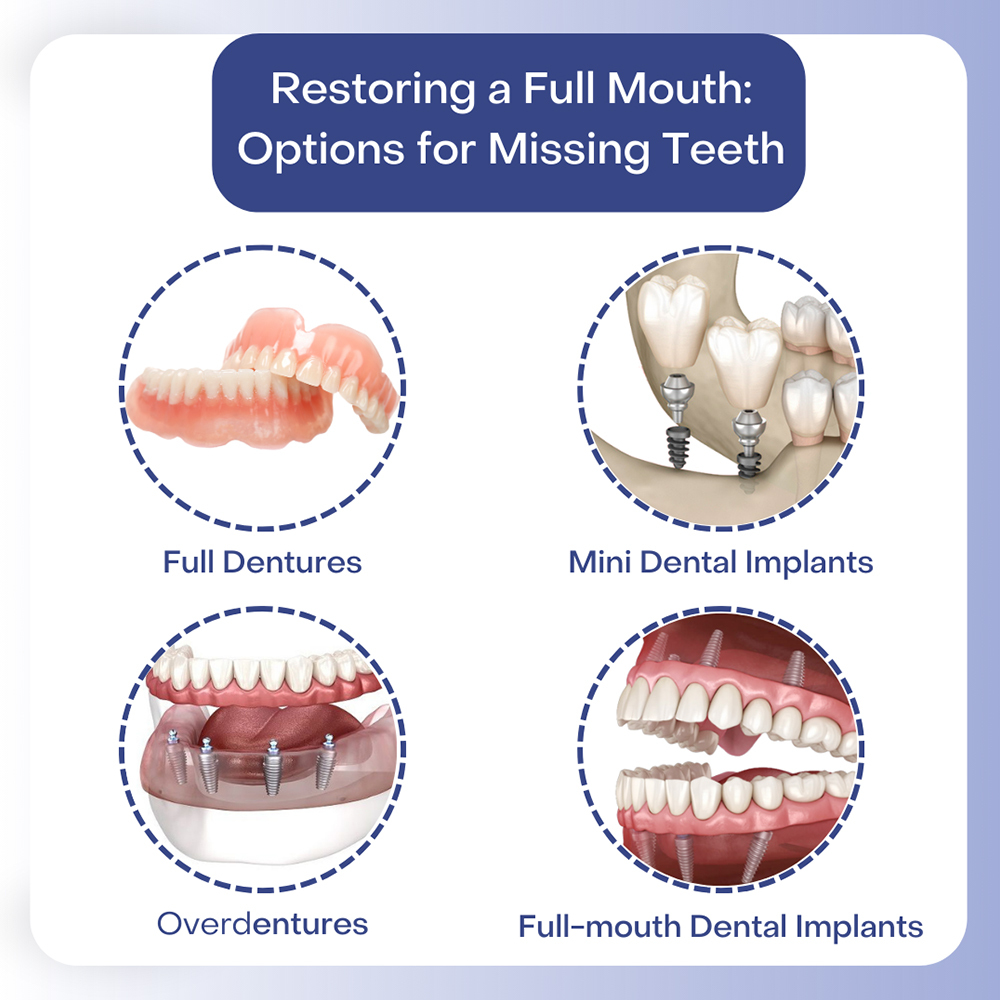Excitement About Dental Sense
Excitement About Dental Sense
Blog Article
Dental Sense Can Be Fun For Everyone
Table of ContentsMore About Dental SenseSome Ideas on Dental Sense You Need To KnowFacts About Dental Sense RevealedAbout Dental Sense
are clinical gadgets operatively dental implanted into the jaw to recover an individual's ability to chew or their appearance. They provide assistance for synthetic (phony) teeth, such as crowns, bridges, or dentures. When a tooth is lost as a result of injury or illness, a person can experience difficulties such as quick bone loss, malfunctioning speech, or modifications to chewing patterns that lead to discomfort.Oral dental implant systems contain an oral implant body and oral implant abutment and might additionally include an abutment addiction screw. Wisdom tooth cavity. The dental implant body is surgically put in the jawbone in area of the tooth's root. The oral implant abutment is typically affixed to the implant body by the abutment fixation screw and prolongs with gums right into the mouth to sustain the connected man-made teeth
(https://www.goodreads.com/user/show/186244556-matthew-music)Framework of The Oral Implant System choosing dental implants, talk to your dental company concerning the potential benefits and risks, and whether you are a candidate for the procedure. Points to consider: Your total health and wellness is a vital consider identifying whether you are a great candidate for oral implants, the length of time it will require to heal, and for how long the dental implant may stay in location.
Smoking cigarettes may impact the recovery process and reduce the lasting success of the implant. The healing procedure for the dental implant body may take a number of months or longer, during which time you typically have a momentary abutment instead of the tooth. the dental implant procedure: Very carefully follow the oral hygiene directions offered to you by your dental service provider.
The Basic Principles Of Dental Sense
Implant failure can cause the requirement for another medical treatment to repair or change the dental implant system. Restores the ability to eat Brings back cosmetic appearance Helps maintain the jawbone from shrinking because of bone loss Maintains the wellness of the bordering bone and gums Assists keep adjacent (neighboring) teeth stable Enhances lifestyle Damage to surrounding all-natural teeth throughout dental implant positioning Injury to the surrounding tissues during surgical procedure, such as sinus perforation Injury throughout surgery (for instance, fracture of surrounding jawbone) Insufficient function, such as seeming like the teeth do not bite with each other usually An experience that the tooth hangs or twisting in place resulting from an abutment screw loosening Implant body failure (looseness of the dental implant body) as a result of systemic infection, which may be more probable in people with unrestrained diabetics issues because of local infection in bone and gums supporting the dental implant body as a result of delayed healing, which might be most likely in people who smoke Trouble cleansing the gum tissues around the implant, resulting in poor oral hygiene Untreated periodontal disease Post-surgical tingling because of nerve impingement or damages Constantly inform healthcare suppliers and imaging professionals that you have oral implants before any magnetic resonance imaging (MRI) or x-ray procedures.
FDA is not familiar with any type of unfavorable events reported for MRI or x-ray procedures with oral implants. Oral implants systems are usually constructed from materials that comply with worldwide consensus standards of the International Company for Standardization (ISO) or ASTM International. These standards have information of what makes a secure product.

An oral implant is a framework that changes a missing out on tooth. With screw-like tools, the surgeon inserts a dental implant into the jawbone, and it serves as an anchor for an artificial tooth, called a crown. A device called a joint connects the artificial tooth to the dental implant. The crown is personalized to fit the person's mouth and match the color of their teeth.
Dental Sense Fundamentals Explained
Some people are not qualified for dental implant surgical treatment. It is for oral specialists to operate on individuals with: acute illnessuncontrollable metabolic diseasebone or soft cells illness or infectionIf these problems are settled, an individual can have the surgical treatment. In, dental doctors avoid operating on individuals with: If people with any see this site of the above go through dental implant surgical procedure, there is a greater danger of the implant falling short.

Dental implant surgical procedure is a tailored procedure. It's not the very same for everyone. However the following provides a general overview of what you can expect your dental practitioner, oral specialist, periodontist or prosthodontist to do: Put the implant surgically. Provide you time to recover. Affix the post and last crown, bridge or denture.
Next off, your specialist will meticulously put the dental implant right into your jaw. If your dental implant is near the front of your mouth, your dental practitioner will make a momentary tooth for you to use up until you heal.
The Definitive Guide to Dental Sense
Your provider can tell you what to anticipate in your scenario. Throughout the healing stage, your jawbone needs to fuse to the dental implant. This procedure, called osseointegration, is critical for stability and long-term success. This procedure can take anywhere from 3 to 9 months. In many cases, it may take longer.
Once your implant heals, your dental professional can affix the joint (small connector message) and your final remediation (crown, bridge or denture). This generally takes about one hour to complete and might call for a second small surgery. You should not really feel any type of pain throughout your oral implant procedure because your service provider will certainly make use of drug to numb your gum tissues.
Report this page